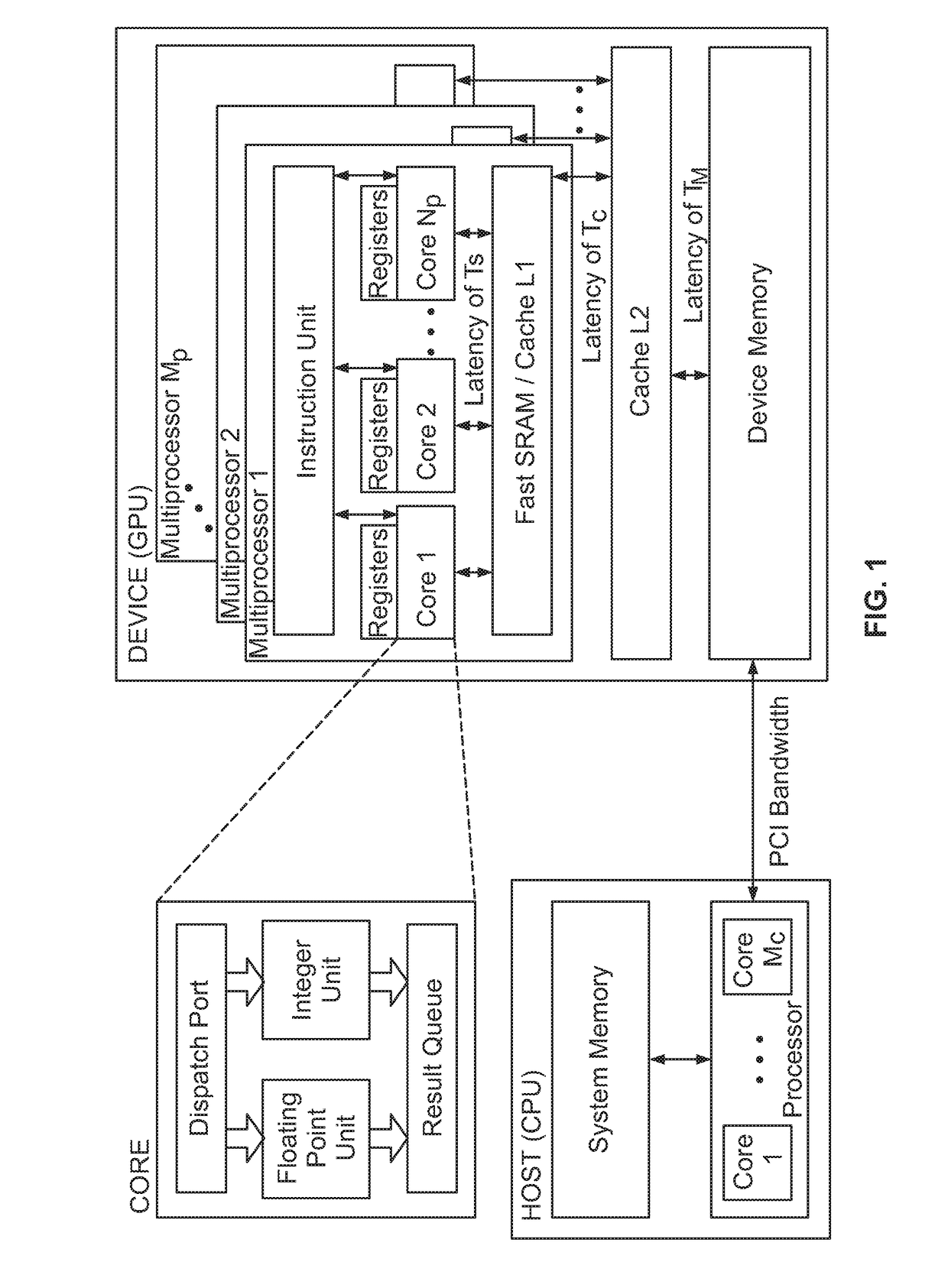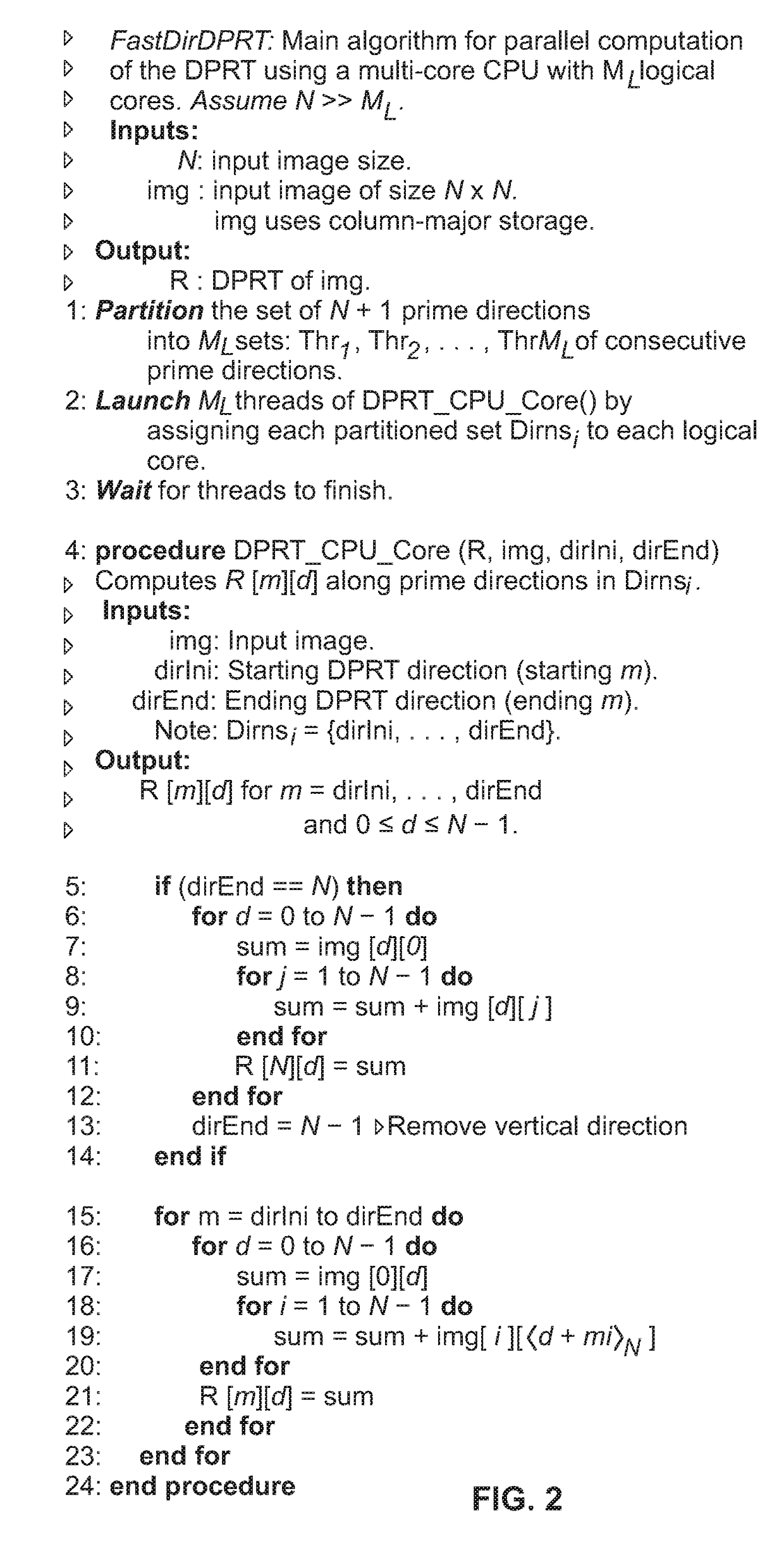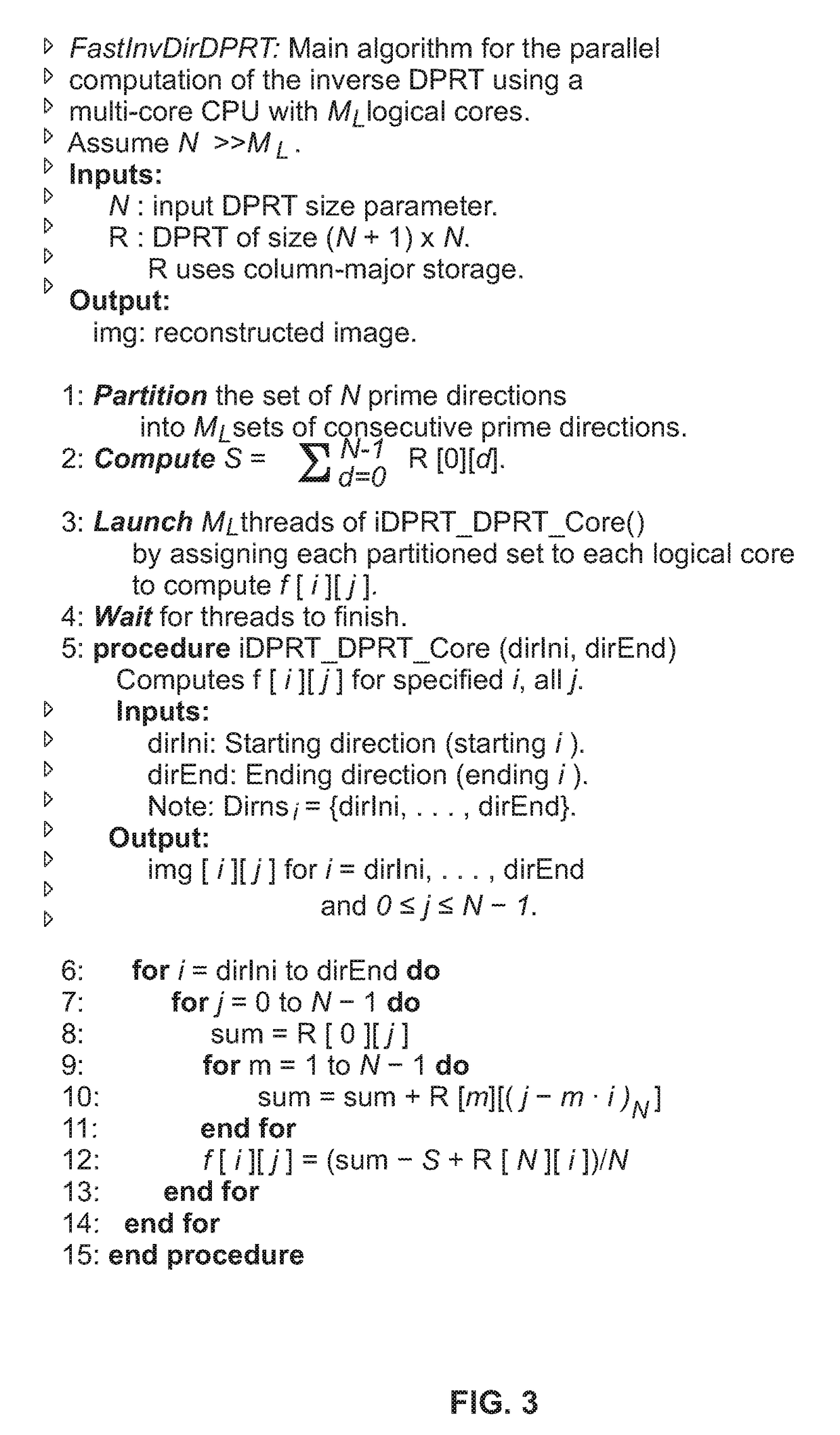SYSTEM AND METHODS FOR THE COMPUTATION OF THE FORWARD AND INVERSE DISCRETE PERIODIC RADON TRANSFORM ON GPUs AND CPUs
- Summary
- Abstract
- Description
- Claims
- Application Information
AI Technical Summary
Benefits of technology
Problems solved by technology
Method used
Image
Examples
Embodiment Construction
[0032]The invention is directed to fast and a scalable architectures and methods adaptable to available resources, that (1) computes DPRT on multicore CPUs by distributing the computation of the DPRT primary direction among the different cores, and (2) computes DPRT on GPUs using parallel, distributed, and synchronized ray computations among the GPU cores with “ray” referring to one of the sums required for computing the DPRT or its inverse along a prime direction.
[0033]The invention provides the following basic notation. Let f denote an image of N×N rows with N is a prime number. It is essential that N is prime to allow the computation of the forward and inverse DPRT using just N+1 prime directions as well as providing for a well-defined inverse DPRT. However, an arbitrarily sized image can be zero-padded to a prime number.
[0034]The DPRT of f is defined as:
R(m,d)={∑j=0N-1f(d,i),m=N,∑i=0N-1f(i,〈d+mi〉N),0≤m<N.Equation(1)Equation(2)
where R is the radon space of the DPRT, m=0, 1, . ...
PUM
 Login to View More
Login to View More Abstract
Description
Claims
Application Information
 Login to View More
Login to View More - R&D
- Intellectual Property
- Life Sciences
- Materials
- Tech Scout
- Unparalleled Data Quality
- Higher Quality Content
- 60% Fewer Hallucinations
Browse by: Latest US Patents, China's latest patents, Technical Efficacy Thesaurus, Application Domain, Technology Topic, Popular Technical Reports.
© 2025 PatSnap. All rights reserved.Legal|Privacy policy|Modern Slavery Act Transparency Statement|Sitemap|About US| Contact US: help@patsnap.com



